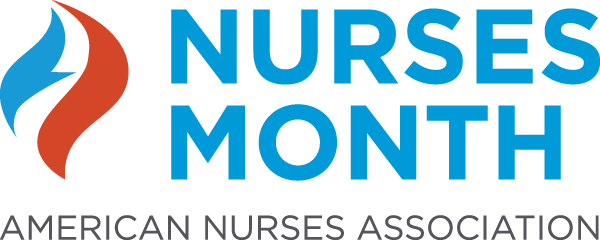
No doubt our nation’s health care workers—nurses, doctors, and other medical professionals—are stretched beyond their limits.
COVID-19 has highlighted a critical shortage of health care workers. In no field is the unmet demand more acute than in the nursing field.
Nurses are Already in Short Supply
Even before the global health crisis, the alarm was being sounded: we need more nurses.
Employment of registered nurses is projected to grow 12 percent from 2018 to 2028, much faster than the average for all occupations, according to the Bureau of Labor Statistics. BLS data projects, on average, about 210,400 RN openings annually over the decade.
Additionally, the demand for licensed practical nurses (LPN) is expected to grow by 11 percent. Nursing assistant jobs are expected grow by at least nine percent over the same time frame.
“We have a shortage of nurses now, and this has been also historic,” Dr. Hala Sabry, an emergency medicine physician, tells WorkingNation. “This is going to be really important because although one doctor can treat a number of patients, we do have recommendations for caps on the number of patients for nurses.”
“It’s really impossible for nurses to follow as many patients as we’re following because they’re completing a lot of tasks. They are stretched to the max, often seeing more than four patients at a time, and that’s just not sustainable,” she says.
“They have the most contact with these patients so they’re most likely to get sick as well. When those nurses who are on the front lines with us are getting sick, we need backup nurses.”
Pre-pandemic, the existing factors for the shortage included an increasing aging population that needs greater care, more cases of chronic diseases, and the limited capacity of education programs.
According to a survey conducted by the National Council of State Boards of Nursing and The Forum of State Nursing Workforce Centers, 50.9 percent of the RN workforce is age 50 or older, meaning they could retire in the next 10 to 15 years.
This in-demand job pays above the national average income of $48,672 in all 50 states and Washington, D.C.. The salary for a registered nurse ranges from $113,240 a year in California to $59,540 a year in South Dakota, according to pay figures compiled by Nursing.org.
Working Across State Lines Provides Opportunity
The enhanced Nurse Licensure Compact (eNLC)—implemented in January 2018—makes it easier for travel nurses to work across state lines. The compact was coordinated by the National Council of State Boards of Nursing (NCSBN). The concept of a travel nursing assignment was created in response to the shortage of nurses. These temporary assignments are mainly performed in hospitals.
More than 30 states have enacted the eNLC . There are other states with pending legislation including Alabama, Massachusetts, Michigan, Vermont, Minnesota, Illinois, Louisiana, New York, New Jersey, and Rhode Island.
Fast-tracking Nursing Students
Some nursing schools accelerated graduation plans in response to COVID-19.
The College of Nursing at Texas A&M University told seniors in March they had the option to choose an early conferral of their degree. Gov. Greg Abbott had announced the waiving of certain regulations to allow nursing students close to graduating, as well as retired nurses to more easily join the workforce.
In California, Gov. Gavin Newsom signed an executive order in March to temporarily expand the workforce to staff the increased number of hospital beds. The order—which recruits retired health care workers along with medical and nursing students—waives certain professional licensing and certification requirements in order to get workers in the field faster. There are an estimated 37,000 people who are eligible to participate.
Higher Education and Online Learning
A decade ago, the Institute of Medicine (IOM) offered its recommendations to address challenges being faced by nurses. One of its key recommendations—which encourages continued learning—suggested increasing the percentage of workers obtaining a Bachelor of Science in Nursing (BSN) degree from 50 to 80 percent over a ten-year period.
In 2018, New York became the first state to pass a law requiring nurses to earn a BSN within ten years of becoming licensed. Other states have plans to adopt similar legislation.
Some schools are addressing the call by offering online advanced learning options. Duquesne University in Pittsburgh, Pennsylvania offers 9 online nursing degrees and certificates.
The National League of Nursing found technology supports learning.
- 82.9 percent of nursing students say technology enhances their learning
- 65 percent of nursing education programs use virtual simulation
- 84 percent use instructional videos for skills enhancement
- 75 percent utilize online or distance learning
Duquesne University touts forward-thinking learning. “Innovations in online learning, technology, and teaching methods have revolutionized nursing education. These changes have allowed nursing students to continue their career and family demands while pursuing advanced health care degrees. At the same time, nurse educators have even greater flexibility in teaching options.”
Celebrating Nurses
The American Nursing Association has designated May National Nurses Month in recognition of the work being done by our nation’s front line nurses.

WorkingNation would like to take this moment to celebrate the women and men who are working in our hospitals, clinics, and private care facilities to battle COVID-19, and to honor them for the good work they do to keep our communities healthy year-round.
RELATED STORIES:
In-Demand Job: Certified Nursing Certificates
Community Health Workers: The Foot Soldiers of the Health Care Industry
Futuro Health expands effort to credential more health care workers











